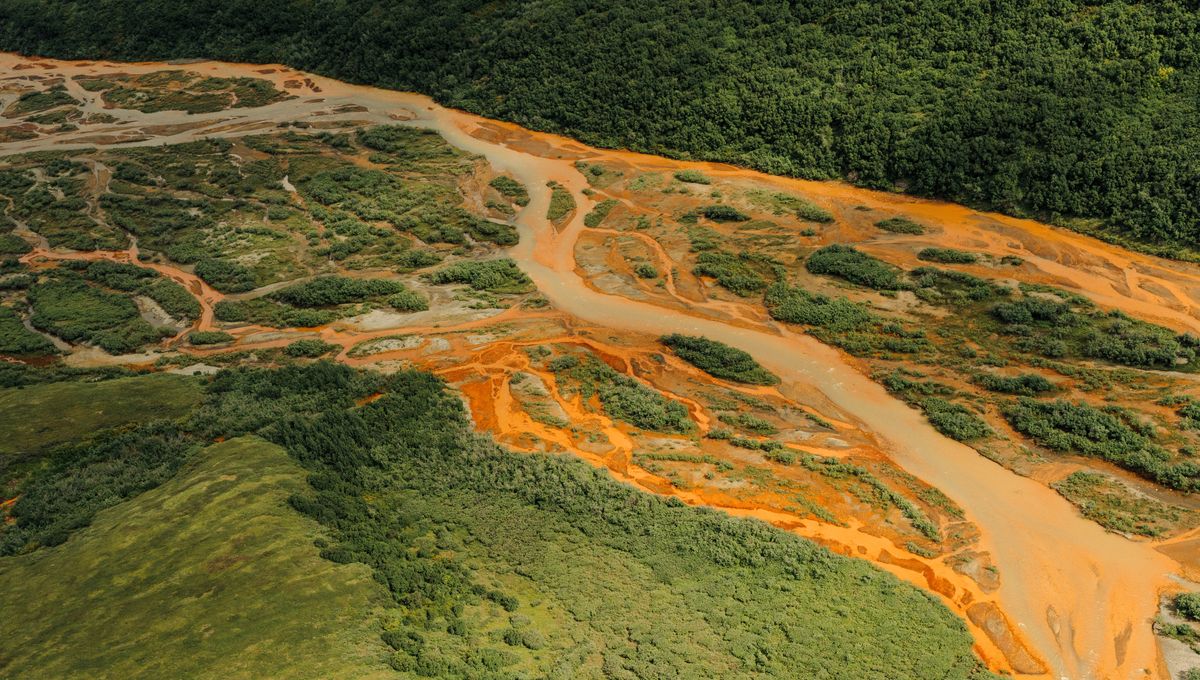
The Salmon River in Alaska winds for many kilometers through wild forest, tundra, and stunning mountain valleys. Once containing the purest water, sustaining fish and other wildlife, it’s now cloudy and orange from climate change and the thawing of permafrost. This change not only alters the landscape, but it’s also unleashing toxicity that threatens ecosystems, water quality, food security, and the health of local communities.
The rest of this article is behind a paywall. Please sign in or subscribe to access the full content.
Permafrost is a vast layer of frozen soil and sediments. As a frozen state, permafrost has locked away millennia of organic matter, nutrients, and, unfortunately, pollutants too – including ones from industrial activity. Due to climate change, increased Arctic warming has thawed the permafrost, resulting in the release of previously trapped contaminants, including heavy metals and toxins, directly into the streams and drinking water sources. The result? At least 75 streams and rivers across northern Alaska now have acidic conditions with trace metals.
Nine out of ten tested samples from major tributaries of the Salmon River exceeded United States Environmental Protection Agency (EPA) toxicity thresholds to aquatic life in at least one metal. These toxins threaten the fish and wildlife that sustain Indigenous and local populations, and risk contaminating their drinking water.
Several tributaries of the Salmon River have turned highly turbid and orange from iron precipitates. However, the color of the river doesn’t indicate safety. For example, clear Kitlik River water, tested in 2023, was found to exceed toxicity thresholds for aluminum, cadmium, and zinc, which are harmful to fish and other aquatic life.
Scientists believe these contaminants come from sulfide mineral weathering – rocks in the thawed permafrost reacting with oxygen and water. This phenomenon is becoming more widespread in the Arctic at an alarming rate as permafrost thaws under climate change.
In the Salmon River, three metals pose the greatest threats:
- Aluminum – an abundant metal found in the Earth’s crust, but has no biological role. It can bind with phosphorus and strip away vital nutrients that support algae and invertebrates, the base of the food chain. While fish eggs are somewhat resistant to aluminum, fish gills get coated with precipitates that interfere with oxygen exchange.
- Iron – an essential metal in small amounts, but at large concentrations it causes cloudy rivers, blocks sunlight, and coats streambeds. This destroys habitats crucial for insects and salmon spawning. For fish, iron buildup on gills causes suffocation.
- Cadmium – a rare and highly toxic element in aquatic ecosystems that accumulates on the surface of fish gills, displacing calcium, leading to respiratory failure and neurotoxic effects. Pacific salmon and Dolly Varden trout are particularly vulnerable to cadmium exposure.
This isn’t just an ecological tragedy; it’s a socio-economic hit too. The Salmon River is historically dominated by chum salmon that feed local communities and provide millions to commercial fisheries. Between 1962 and 2023, the local salmon harvest averaged over 230,000 fish per year, forming a critical food and income source. But after pollution spread widely around 2019–2020, catches significantly reduced. The 2024 salmon harvest was the lowest recorded in over 60 years.
While scientists can’t say for sure that metal poisoning caused the decline, the timing is suspicious. Sadly, neighboring rivers like the Alatna and John also show early signs of metal contamination. Permafrost thaw could accelerate these changes, turning more Arctic rivers into toxic ones.
If these trends continue, the devastating effects may not stop at the fish. Birds and mammals that rely on salmon could all be affected. As researchers continue to monitor these changes, the rest of the planet should take note: the time to respond to climate change is now.
The study is published in PNAS.
Source Link: Alaska's Salmon River Is Turning Orange – And It's A Stark Warning